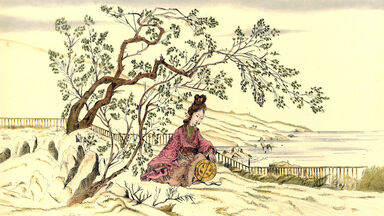The Jesuit Antonio Andrada, a native of Portugal (1580-1634), travelling from India, appears to have entered Tibet on the west, in the Manasarowar Lake region, and made his way across to Tangut and north-western China; in 1661 the Jesuit fathers Johann Grueber (an Austrian) and Albert D 'Orville (a Belgian) travelled from Peking via Tangut to Lhasa, and thence through Nepal to India.
The work in which he embodied his researches was immediately translated into all civilized languages, the English version, Mongolia, the Tangut Country, and the Solitudes of Northern Tibet (1876), being edited by Sir Henry Yule.
By the end of the 5th century the western parts fell under the sway of the "White Huns" (Ephthalites, or Tochari), while the eastern parts were under Tangut (Thygun) dominion.
While still young he started on a pilgrimage to Jerusalem, and travelling by way of Tangut, Khotan, Kashgar, Talas in the Syr Dania valley, Khorasan, Maragha and Mosul, arrived at Ani in Armenia.
